Here are the best articles, videos and Instagram posts about growing fruit trees, created by some of the most knowledgeable garden bloggers in the business. An attractive, long-term addition to any garden or allotment – you can even grow some fruit trees in patio containers.
Perfect for pollinators, they produce a delicious harvest year after year. And if you have space for a small orchard, you could produce enough fruit to feed your family all year round. Read on for top tips, variety advice and inspiration…
Contents:
- Best general advice on growing fruit trees
- Best advice on how to plant and care for your fruit trees
- Best advice on choosing fruit trees to grow
- Best advice on growing citrus trees
- Best advice on harvesting and preserving crops from your fruit trees
Best general advice on growing fruit trees
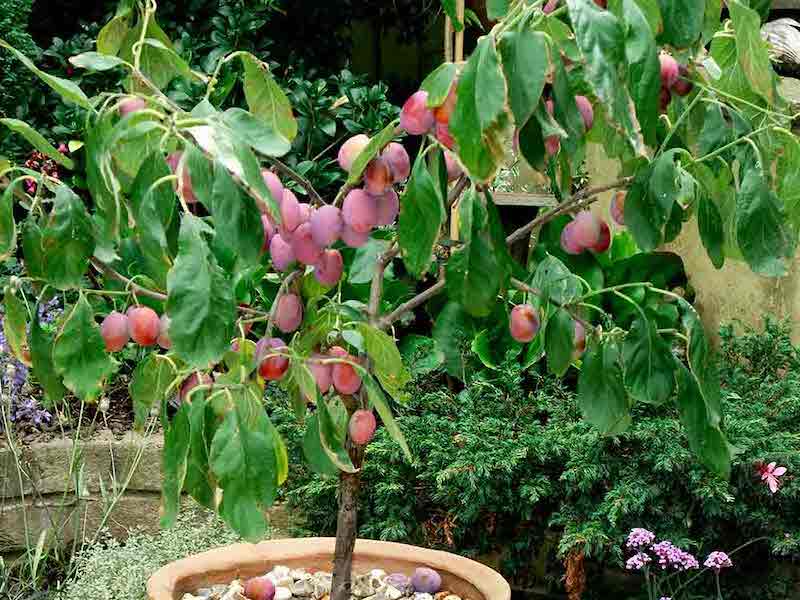
Image: Victoria plum tree from Suttons
No dig gardener Charles Dowding’s excellent video guide to growing fruit trees dispels some of the myths about them being difficult to look after. He also shares tips on planting, mulching, pruning, and thinning fruit. Charles explains that most modern fruiting trees are grafted onto rootstock that controls how large they get, so it’s easy to choose the right one for you.
No matter what kind of fruit you want to grow, John at Allotment and Gardens has it covered in one of his comprehensive guides to growing fruit trees. He has individual tips on looking after apricots, apples, greengages, figs, peaches and nectarines, cherries, pears and plums, as well as several nut varieties. If you want to grow a fruit tree in a container, John explains how fluctuating extremes of temperature can cause problems, and recommends moving your containers to the back of a garage or shed while the trees are dormant in the winter, so they won’t be tricked back onto life too early by an unexpectedly sunny day.
If you only have a small growing area, a great option is to create an espaliered fruit tree, as explained beautifully by Alexandra over at The Middle-Sized Garden. The idea is to plant your young fruit tree up against a wall or fence. As its branches grow, you train them to stretch out horizontally, making excellent use of a space that’s often left bare and unproductive.
You do need a little patience when growing fruit trees from young grafted whips, says Paulo aka the Urban Gardener in his brilliant video following the development of his plum tree over a few years. Bursting with enthusiasm, he shows how his Victoria plum develops from a young, bare-rooted “twig” to a flourishing tree setting its first fruit. He also has tips on pests, pruning and creating an edible fruit tree hedge.
Best advice on how to plant and care for your fruit trees
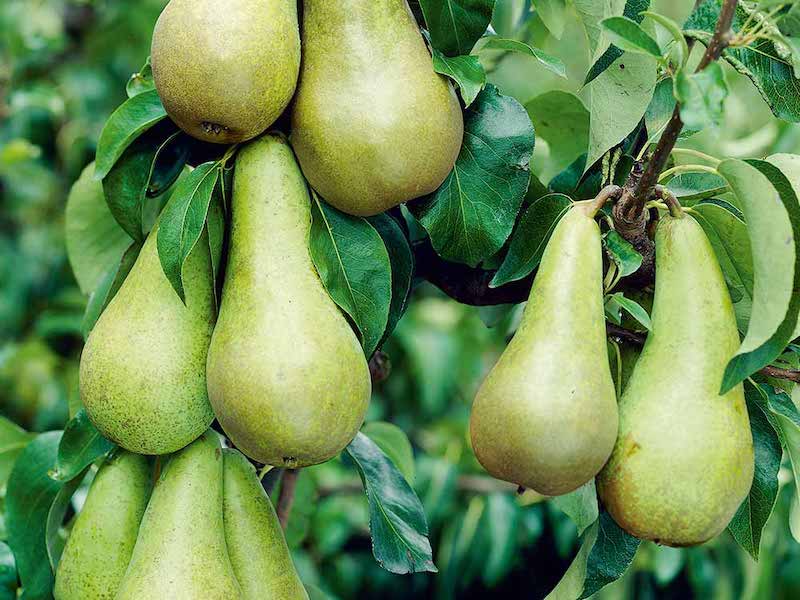
Image: Visions BV, Netherlands
Consider where you will put your fruit tree and what growing conditions it needs before selecting the perfect specimen for your plot, advises Lee, aka Garden Ninja. Remember that cross pollinating trees need to be fairly close together, and that it’s best to keep falling fruit away from paths and decking. For very clear instructions on pruning your apple and plum trees, check out Lee’s wonderful video.
It’s common to buy fruit trees with bare roots, ready to plant out as soon as possible. Liz at Byther Farm says it’s a good idea to soak the roots of fruit trees before planting to make sure they aren’t dried out when they go into the ground. Dig a hole deep enough to make sure all the roots can be buried, cover them with soil and water in well. She also shares the best way to plant a pot-grown fruit tree.
Pollination and weather are key to a good harvest from your fruit tree, according to Sally of Living on one acre or less. Apart from self-fertile varieties, she says most fruit trees rely on having a partner tree in the same group growing nearby and the busy work of insect pollinators. Sally also touches on how climate change is impacting on the timing of fruit harvests.
It’s important to know what kind of soil you have so that you can make sure your fruit trees get enough water. At her allotment, Becky at @sow_much_more has a chalky soil that dries out quickly. To keep her mature apple trees happily hydrated she was planning to mulch heavily with rotted horse manure in the autumn to improve water retention.
Pruning is essential if you want your fruit trees to stay happy and healthy. Tony at Simplify Gardening trains his fruit trees on cordons stretched across the allotment bed, or as espaliers against a wall. His video demonstrates how to prune in winter and summer. He cuts branches back in winter to keep the trees strong and in good shape, while an additional summer pruning gets stray growth under control and sets up spurs that will fruit the following year.
In spring, fruit trees tend to produce a lot of green growth. Elaine at The 3 Growbags says this can stop air circulating freely around the foliage and increase the risk of pests and diseases. She advises pruning fruit trees in summer, detailing how she uses this technique successfully on her apple, pear, greengage, cherry and plum trees.
When you see lots of precious fruits setting on your fruit trees it’s tempting to want them all to grow to full size. Carol, the Sunday Gardener, explains why you should thin the fruit on your trees. She says some fruits should be removed in June when the trees will naturally drop some of their bounty. Taking this natural process a step further will improve the health and quality of the fruit, and it avoids branches becoming overloaded and damaged.
Best advice on choosing fruit trees to grow
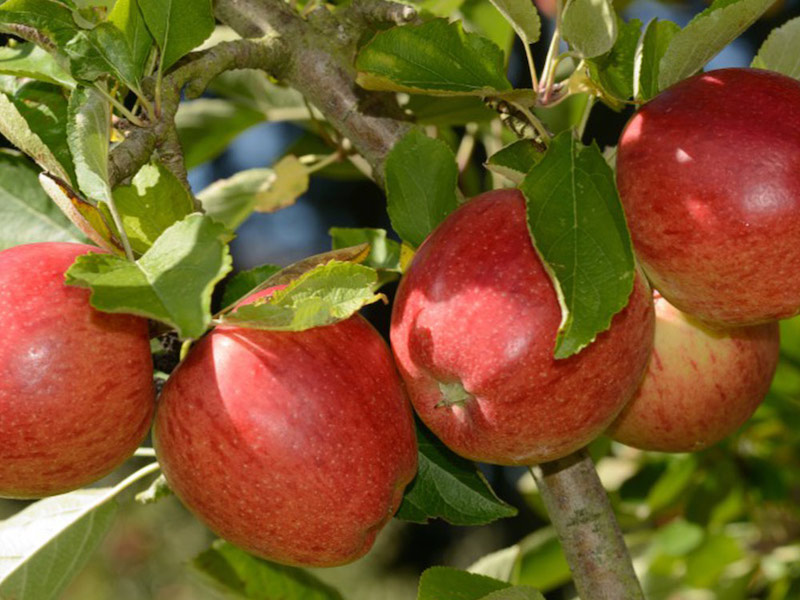
Image: Braeburn apple tree from Suttons
Apple trees are the top choice for Andrew at Life on Pig Row. He loves their spring blossom, the bees they bring in, and the fact that he’s growing his own fruit. But his biggest prize is the joy of eating a fruit that’s free of pesticides. If you’re still on the fence about whether to plant your own fruit trees, this is the post to inspire you!
A sheltered south-facing wall backing onto the greenhouse is the perfect spot chosen by Katharine, the Teabreak Gardener, to plant a nectarine tree. Positioning it alongside a peach and an apricot, her aim is to fan train them all to create an impressive feature and yield some tasty summer fruits. She particularly loves the nectarine’s fondant pink blossom.
If you’re only going to grow one fruit tree, make it a Victoria plum, says Laura at The 3 Growbags. They are self-fertile – so you only need one, unlike apples and pears which need a second tree nearby for pollination. They crop heavily and are simple to freeze – Laura says to just “shove them in freezer bags”.
Meanwhile Laura’s sister Caroline, also at The 3 Growbags, is a fan of the morello cherry tree. Small, self fertile and suitable for partial shade or full sun, she says it produces reliable crops and is perfect for cooking up into jams or tarts. Just don’t be tempted to taste the raw fruit – it’s highly acidic!
Pumpkin Beth’s fig tree reminds her of holidays in sunnier climes. She says fig trees have lovely decorative leaves and make magnificent trees or shrubs, either in a conservatory or glasshouse. Self-fertile, they will give you two crops a year indoors, or a single crop in a sheltered spot in the garden.
Images from Kirsty at @my_little_allotment show her happy fig tree producing some healthy-looking fruits at the allotment in May, and the first ripe fig of the year sliced open and ready to eat in August.
Another fruit tree usually associated with warmer climates is the sharon fruit or oriental persimmon, suggested as a great choice by Simon of Garden of Eaden. A really ancient tree originating in China and Japan, it has tasty orange fruits and grows best in a well-drained loamy soil in a sunny, sheltered place.
Best advice on growing citrus trees
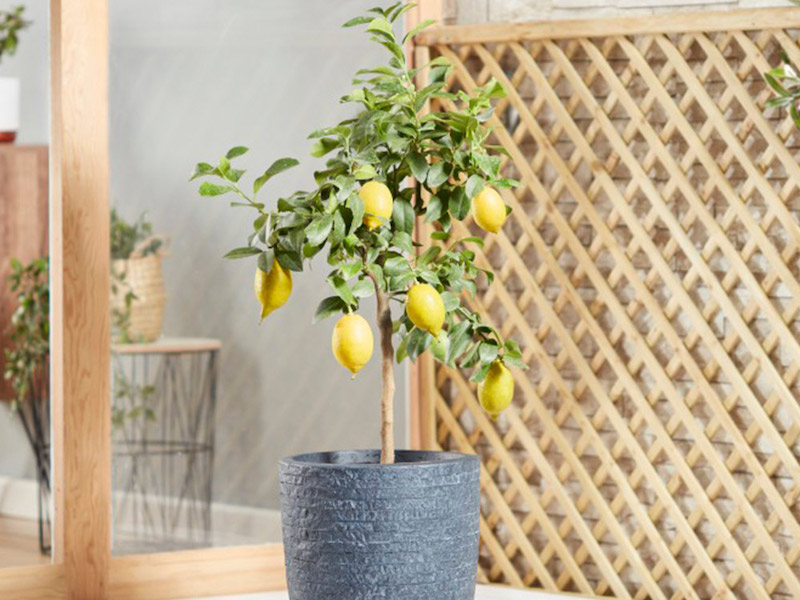
Image: Lemon ‘Eureka’ Citrus Tree from Suttons
If you think it’s impossible to grow a fruiting lemon trees in the UK, Paulo the Urban Gardener has great news for you. His secret to successful lemon tree cultivation in cooler environments is to give them as much sun as possible and to provide protection from harsh conditions. Growing his lemon tree in a large terracotta pot means he can move it to wherever it will be happiest, depending on the weather and the time of year.
The image of a vibrant yellow lemon, flanked by its almost ripe lime green neighbours in November sunshine, is a glowing testament to the citrus growing skills of Debbie at @mrsbeesgarden. This prized produce was coming straight off her lemon tree to add some fruitiness to a celebratory drink.
Kirsty at @my_little_allotment has discovered the secret to protecting her potted lemon and calamondin orange trees from the cold is to pop them just inside her patio doors before the first frosts. She moves them back out into the garden for the summer months and her successful harvests show how well her regime works.
Best advice on harvesting and preserving crops from your fruit trees
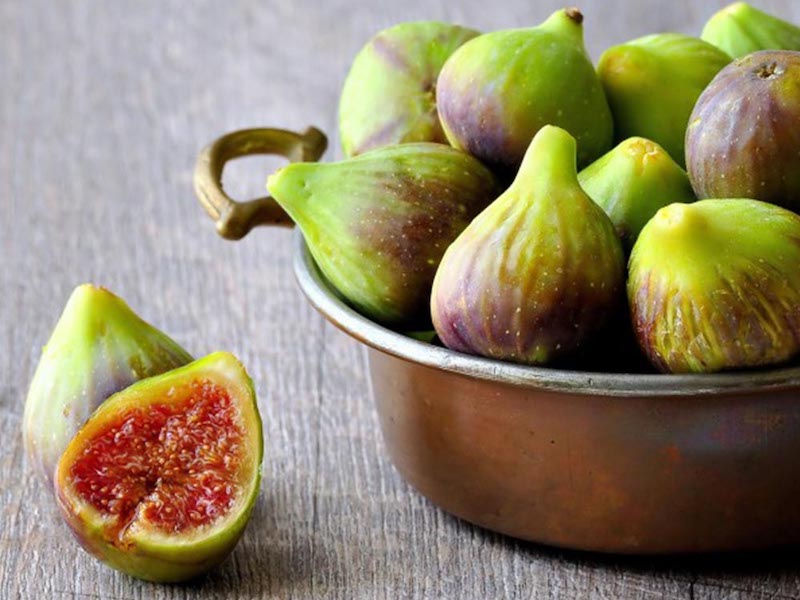
Image: Brunswick fig tree from Suttons
Over at @thebridgecottageway, Sue and Tim are thrilled to have bountiful harvests from their fruit trees and like to use them in lots of different ways. They say their Victoria plums are fantastic stewed with star anise and a little sugar, then frozen. The couple’s apples are juiced, stewed, cooked, preserved in various guises, with “Grandad crisps” – slow oven-dried apple rings – a new family favourite. And their apples stored in the garage wrapped in newspaper were still good to eat in January, if a little wrinkly.
If you’re anything like Becky of @sow_much_more, you’ll be devouring your homegrown fruit straight from the tree before there’s time for a proper harvest. Looking at Becky’s stunning picture of the most perfect conference pears it’s no wonder these juicy beauties grown on a pair of espaliered trees by the main path on her allotment are irresistible. Luckily her four mature apple trees produce enough windfalls for crumbles, pies, sauces and the freezer.
Check out whether your chosen apple tree produces fruit that’s best to eat or cook, is a top tip from Katrina at Homegrown Garden, who inherited a small, but prolific mystery apple tree when she took on her allotment. For years she thought it produced cooking apples because the first one she tasted was so sour. It turns out it’s actually the extremely versatile Egremont Russet, good for eating, cooking and making cider. These great images show Katrina in glorious mid-harvest.
Attractive and versatile, with the promise of homegrown fruits to feast on, isn’t it time to plant a fruit tree or two in your garden or allotment? With plenty of advice from the experts to steer you in the right direction, just imagine the satisfaction of harvesting your first crop…
Lead image: Apple (Malus) Appeltini from Suttons
Last Updated on November 8, 2024 by Suttons Horticultural Team

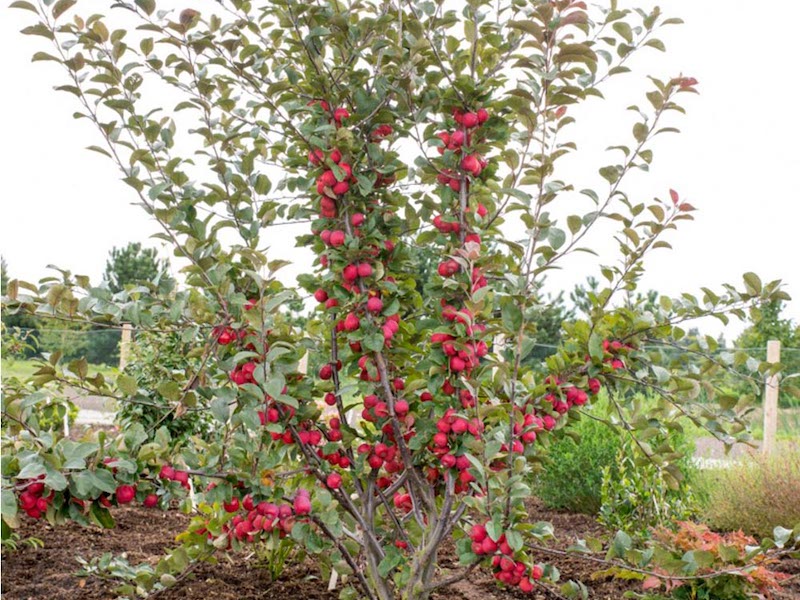




Hi,
I could not find the information I was looking for in the articles above.
I am trying to find out why my brown turkey fig tree is only producing leaves from the end of each branch. There are no leaves anywhere else along the length of the branches.
The tree is approximately 8 years old and has never borne fruit.
Hope you can help
Regards
John